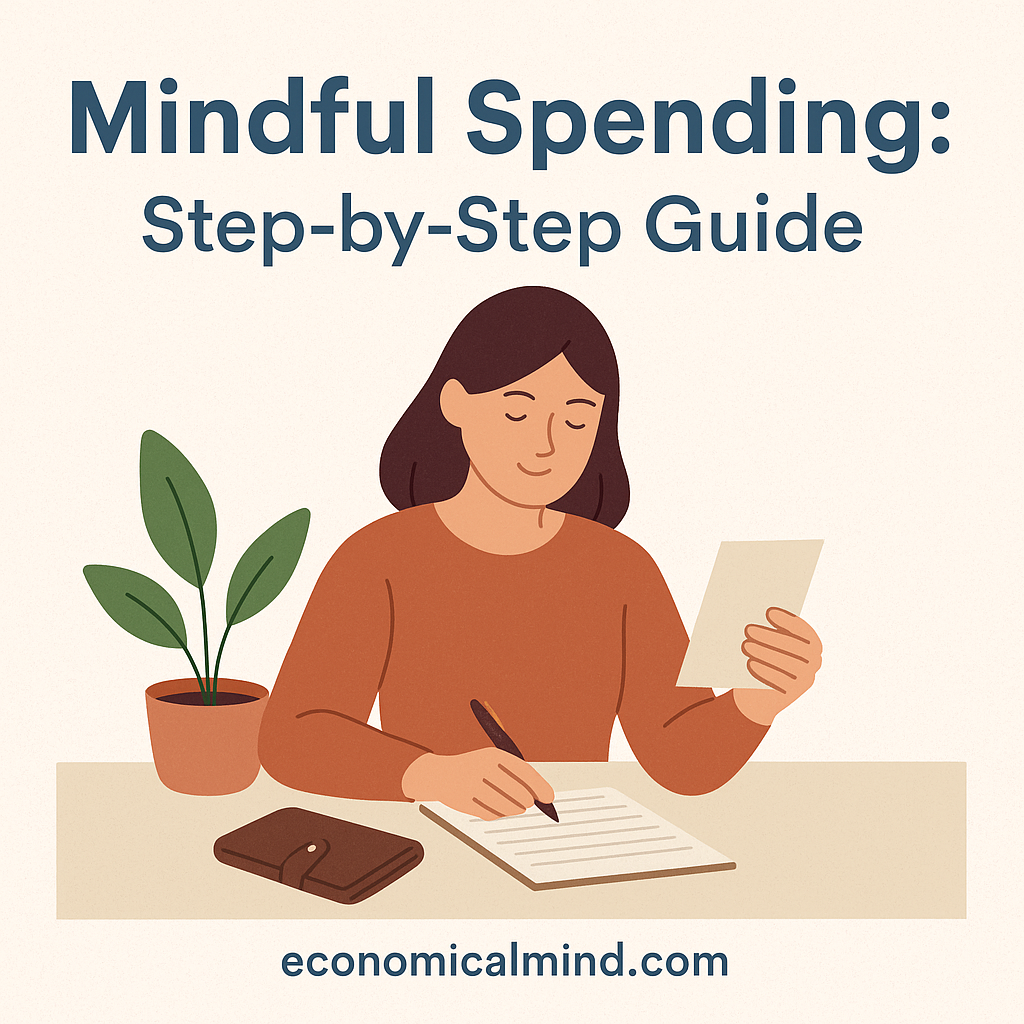
Mindful spending isn’t about restricting yourself — it’s about becoming aware of how your money choices align with your values and long-term goals. When you spend intentionally, you gain control, reduce guilt, and create more satisfaction with less financial stress.
Here’s a simple, step-by-step guide to help you practice mindful spending and transform your relationship with money.
Step 1: Identify What Truly Matters to You
Start by asking yourself what brings genuine fulfillment.
Is it travel, security, experiences with loved ones, or personal growth?
When you define your priorities, you’ll naturally begin to notice which expenses feel aligned — and which ones don’t.
Mindful spending isn’t about cutting everything; it’s about spending more on what you love and less on what doesn’t add real value.
Try listing your top three financial priorities. Every purchase decision becomes easier when viewed through that lens.
Step 2: Track Your Spending Without Judgment
Awareness is the first step toward change.
For one month, track every expense — from major bills to coffee runs — using an app, spreadsheet, or notebook.
At the end of the month, review where your money actually went.
Ask yourself:
- Which purchases made me happy?
- Which ones felt impulsive or forgettable?
- Are there patterns I want to change?
You can’t be mindful about spending if you don’t know where your money is going.
Step 3: Pause Before Every Purchase
Before buying something, take a brief pause — even just ten seconds — to ask:
“Do I really need this? Will it still feel worth it tomorrow?”
This small moment of reflection can help you avoid emotional or convenience-based purchases.
If you still want it after a short delay, it’s probably something you truly value. If not, you’ve just saved money with zero regret.
Step 4: Create a Conscious Spending Plan
Instead of using a restrictive budget, build a conscious spending plan.
Allocate your money across three categories:
- Essentials: Housing, food, transportation, insurance.
- Goals: Savings, debt repayment, investments.
- Joyful Spending: Things that bring happiness or comfort.
This method gives you structure without guilt. You’re not depriving yourself — you’re directing your money toward what matters most.
Step 5: Practice Gratitude After Spending
When you make a purchase that feels aligned with your priorities, pause to appreciate it.
Acknowledge that your money allowed you to improve your life, support others, or enjoy a meaningful experience.
This builds a positive emotional connection with spending, reducing the cycle of guilt or impulse buying.
Step 6: Reevaluate Regularly
Your goals and values will evolve — and your spending habits should too.
Revisit your spending every few months and ask:
- Does this reflect who I am now?
- What can I adjust to better support my current priorities?
Mindful spending isn’t a one-time project — it’s an ongoing practice that grows alongside you.
Bonus Tip: Separate Wants and Needs Visually
Try keeping a small “wish list” of things you want to buy.
If you still want them after a few weeks, add them to your spending plan.
If not, cross them off — and recognize that you just made a conscious, empowered choice.
Final Thoughts
Mindful spending gives you the freedom to use money as a tool — not a source of stress.
By aligning your purchases with your values and staying aware of your patterns, you’ll enjoy greater peace, purpose, and confidence with every dollar you spend.
Remember: financial well-being doesn’t come from having more — it comes from using what you have more intentionally.
